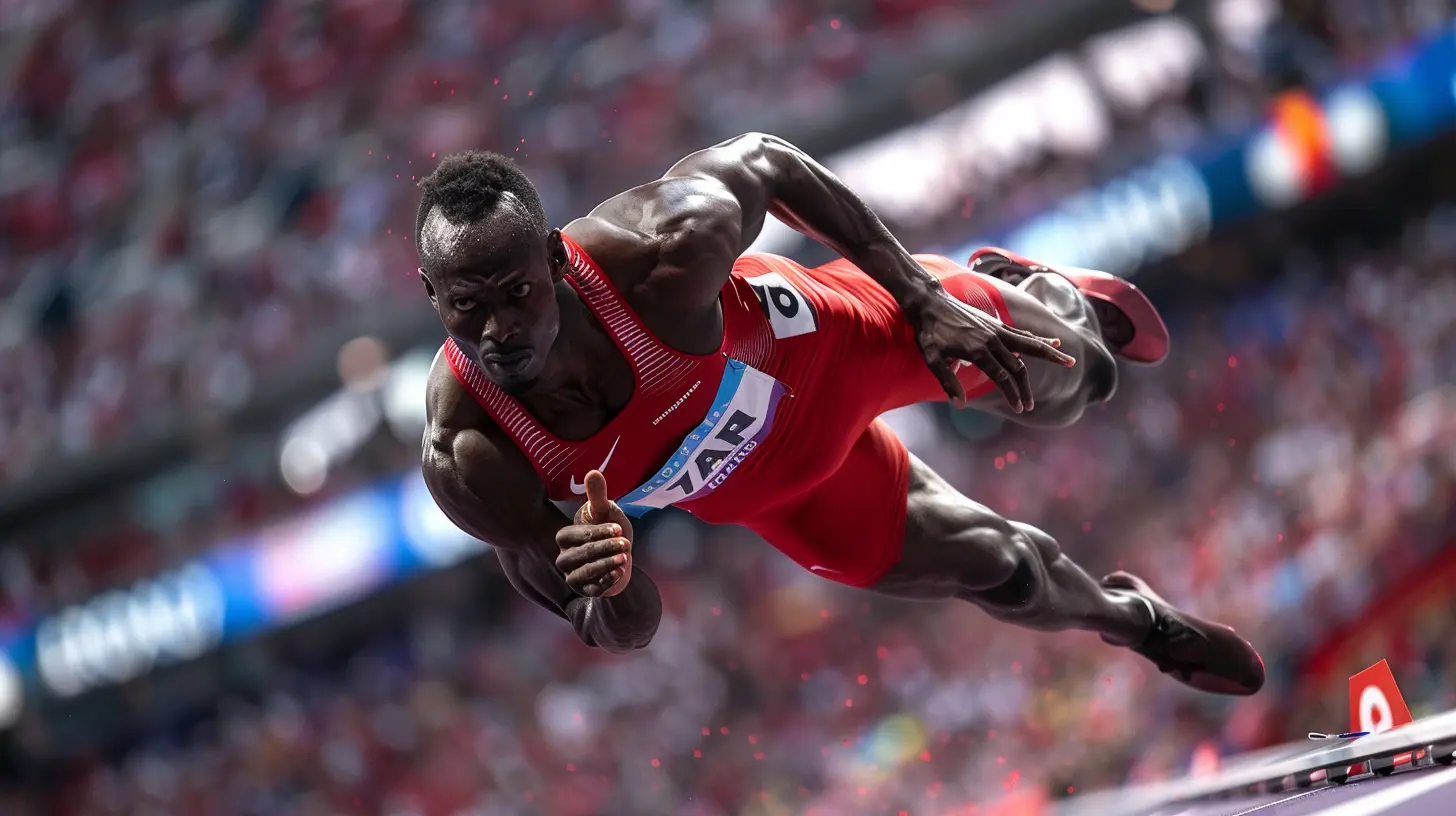27 February 2025
Ever wonder how athletes seem to defy gravity during a jump or explode off the blocks like they're shot from a cannon? There's no magic trick involved—it’s all about harnessing the science of explosive energy. Whether you're looking to increase your vertical jump, shave seconds off your sprint start, or just become a more dynamic athlete overall, understanding the mechanics behind explosive power can make a massive difference. Let’s dive into the nuts and bolts of how you can boost your jump height and sprint starts using science-backed techniques.

What is Explosive Energy?
Before we get into the nitty-gritty, it’s important to define what we're talking about here. Explosive energy, or power, is the ability to generate maximum force in the shortest amount of time. Picture a coiled spring suddenly releasing all its energy in an instant—this is essentially what your muscles do when you jump or sprint. The faster and more efficiently your body can produce this force, the better your performance in activities that require short bursts of speed and power.Power vs. Strength: What’s the Difference?
It’s easy to confuse strength and power, but they aren’t quite the same. Strength is your ability to exert force—think lifting a heavy weight slowly. Power, however, is all about speed. It’s the ability to apply that force rapidly. Sprinting and jumping require power, not just raw strength. If you want to improve your vertical jump or sprint speed, you need to focus on both strength and the rate at which you can apply that strength. In other words, you’re training your body to become a faster, more explosive version of itself.
The Science Behind Jumping Higher
Jumping might seem simple—you just bend your knees and push off the ground, right? Not so fast. There’s actually a lot more going on behind the scenes. Here’s a breakdown of the key components that contribute to an impressive vertical jump.Muscle Fiber Types: Slow Twitch vs. Fast Twitch
Muscles are made up of different types of fibers, and not all fibers are created equal when it comes to explosive movements. You’ve got two main types: slow-twitch (Type I) and fast-twitch (Type II) muscle fibers. Slow-twitch fibers are great for endurance activities like long-distance running. They’re efficient but not very powerful.Fast-twitch fibers, on the other hand, are your go-to for explosive actions like jumping or sprinting. These fibers can generate a lot of force quickly, but they fatigue faster. If you want to jump higher, you need to activate and strengthen those fast-twitch fibers. How do you do that? Through targeted training.
Plyometrics: The King of Jump Training
When it comes to increasing vertical jump height, plyometric exercises are your best friend. Plyometrics involve quick, explosive movements designed to improve your body's ability to generate power. Think jump squats, box jumps, and depth jumps. These exercises train your muscles to produce force rapidly, which is exactly what you need when you're trying to leap into the air.Here’s how plyometrics help: Each time you perform a quick, explosive movement, your muscles go through a cycle of stretching and contracting. This cycle is known as the "stretch-shortening cycle," and it’s key to building power. The quicker and more efficiently you can transition from the stretch to the contraction phase, the more explosive your jump will be.
Strength Training: Building a Solid Foundation
While plyometrics focus on speed and power, strength training is just as vital. You can't have power without strength. Exercises like squats, deadlifts, and lunges help build the muscle mass and strength necessary to support explosive movements.But here’s the thing: you don’t just want to lift heavy weights slowly. You also need to train your muscles to apply that strength quickly. That’s why incorporating "speed-strength" exercises—movements where you lift lighter weights but focus on moving them as quickly as possible—can be highly effective for improving your vertical jump.
Core Strength: The Hidden Key
Most people think jumping is all about the legs, but your core plays a massive role too. A strong core helps stabilize your body and transfer energy more efficiently from your lower body to your upper body. If your core is weak, you’ll lose power during your jump. Exercises like planks, Russian twists, and hanging leg raises can help strengthen your core, improving your overall jumping ability.
The Science Behind Faster Sprint Starts
When it comes to sprinting, especially the start, it’s all about generating as much power as possible in a short amount of time. Just like jumping, sprinting relies heavily on explosive strength and fast-twitch muscle fibers. But there are some additional factors to consider.Acceleration: The First Few Steps Matter Most
The start of a sprint is crucial. It’s where the most significant gains (or losses) in time happen. During the first few steps, you’re transitioning from a stationary position to full speed. This phase is called acceleration, and it’s all about pushing hard against the ground to generate momentum.To improve your sprint start, you need to focus on two things: force and rate of force application. Basically, how much force you can generate, and how quickly you can apply that force. Exercises like sled pushes and hill sprints are great for training this because they force you to push hard against resistance, mimicking the demands of a sprint start.
Improving Technique: The 45-Degree Lean
Good sprinting technique can shave seconds off your time. During the start, you want to maintain a forward lean of about 45 degrees. This helps you maximize the force you’re applying against the ground, propelling you forward more efficiently. If you stand up too quickly, you’ll lose momentum and speed.Also, focus on driving your knees high and pumping your arms with purpose. Your legs and arms work in tandem, so efficient arm movement can actually help improve your stride length and frequency.
Strength and Power: The Sprinting Twins
Just like with jumping, sprinting requires a combination of strength and power. You need strong legs to generate force, but you also need to be able to apply that force quickly. Exercises like power cleans, squat jumps, and Romanian deadlifts can help build the explosive strength necessary for a faster sprint start.Flexibility and Mobility: The Unsung Heroes
It’s not just about strength and power—flexibility and mobility also play a role in your sprinting performance. Tight muscles can limit your range of motion, making it harder to achieve proper sprinting form. Regular stretching and mobility exercises, especially for the hips and hamstrings, can help improve your stride length and efficiency.
The Role of Neuromuscular Adaptation
Let’s get a bit scientific for a moment. When you train for explosive movements like jumping and sprinting, you’re not just building muscle—you’re also training your nervous system. This is known as neuromuscular adaptation. Essentially, you’re teaching your brain and muscles to communicate more effectively.The more you practice explosive movements, the better your brain becomes at recruiting the right muscle fibers at the right time. This improved coordination allows you to generate more power in less time. So, it’s not just about getting stronger—it’s also about getting more efficient.
Recovery: The Missing Piece
One thing athletes often overlook is the importance of recovery. Explosive movements are taxing on your muscles and nervous system, so giving your body time to recover is crucial for making gains. Overtraining can lead to injuries and burnout, which will only set you back.Make sure to incorporate rest days and active recovery into your training routine. Massage, foam rolling, and stretching can help reduce muscle soreness and speed up recovery, allowing you to get back to your workouts sooner and stronger.
Putting It All Together: A Sample Training Plan
Now that you understand the science behind explosive energy, let’s look at how you can put it all together in a training plan. Here’s a simple, sample routine to get you started:Day 1: Plyometrics and Sprint Drills
- Box Jumps: 3 sets of 10 reps- Depth Jumps: 3 sets of 8 reps
- Sprint Starts: 5 sets of 20 meters
- Hill Sprints: 4 sets of 30 meters
Day 2: Strength Training
- Squats: 4 sets of 6 reps- Deadlifts: 4 sets of 5 reps
- Romanian Deadlifts: 3 sets of 8 reps
- Planks: 3 sets of 60 seconds
Day 3: Active Recovery
- Light Jog or Walk: 30 minutes- Stretching and Mobility Work: 20 minutes
Day 4: Speed and Strength
- Power Cleans: 4 sets of 4 reps- Squat Jumps: 3 sets of 8 reps
- Sled Pushes: 5 sets of 20 meters
- Core Circuit (Planks, Leg Raises, Russian Twists)









Mitchell Brooks
Great insights! Excited to boost my performance!
April 4, 2025 at 1:05 PM